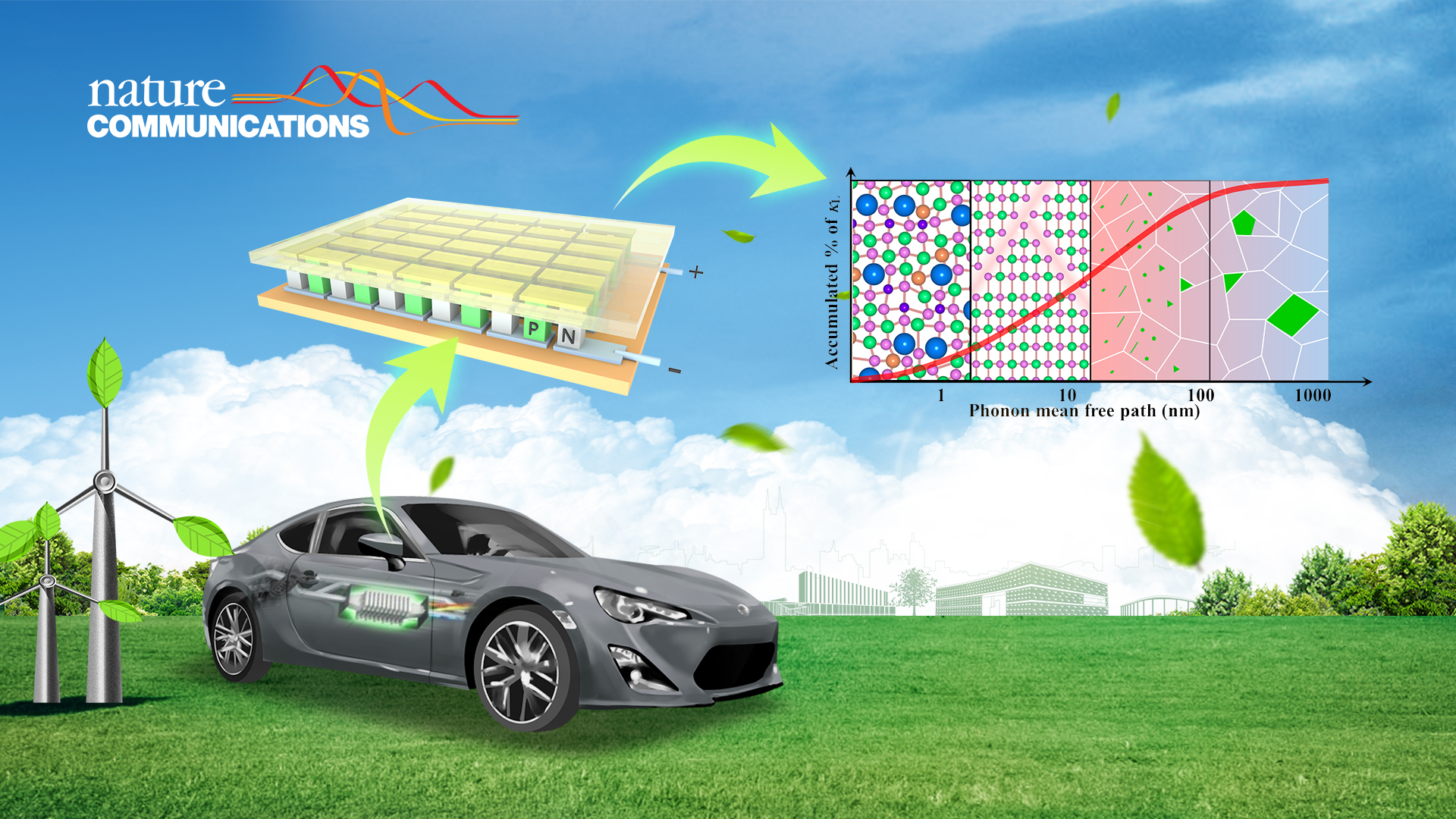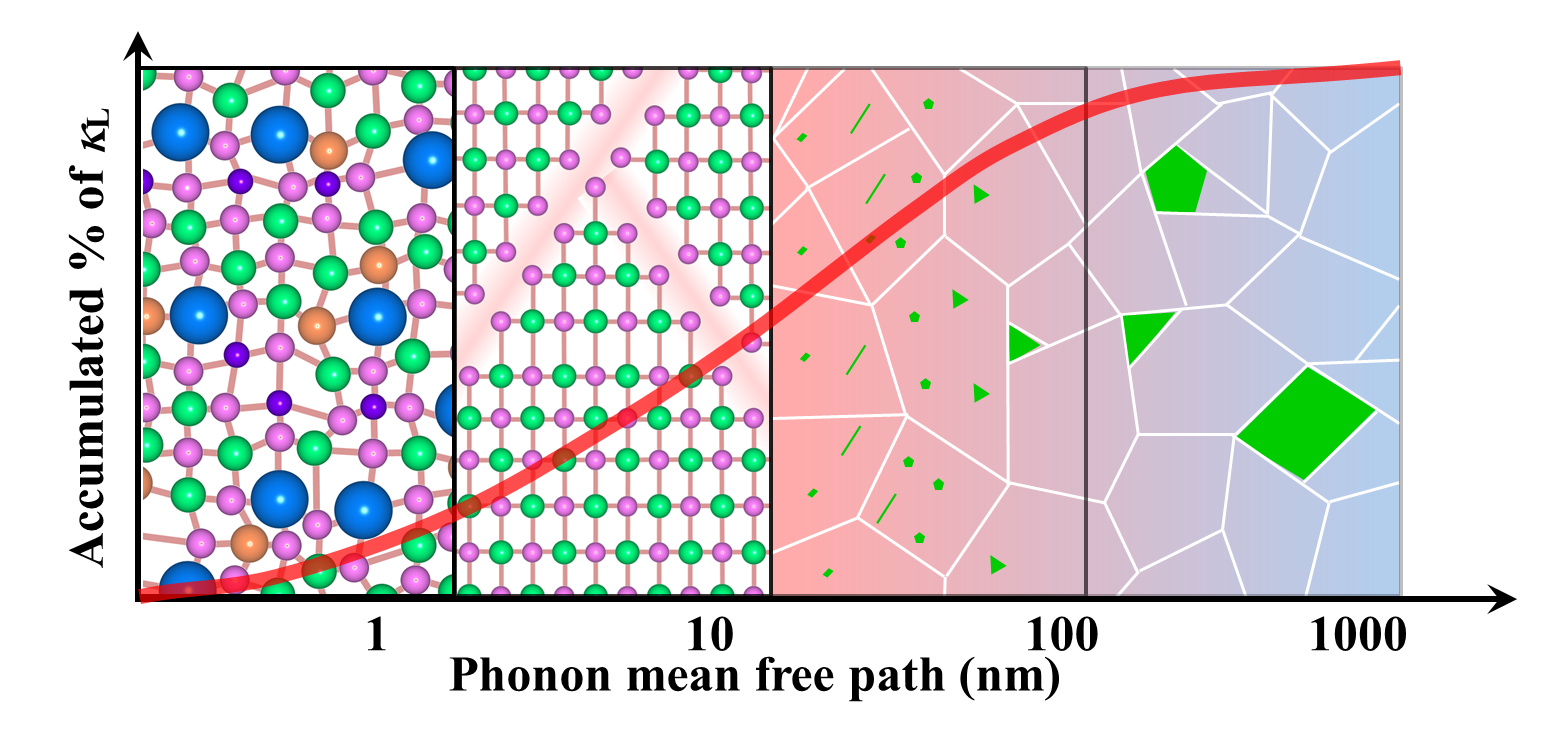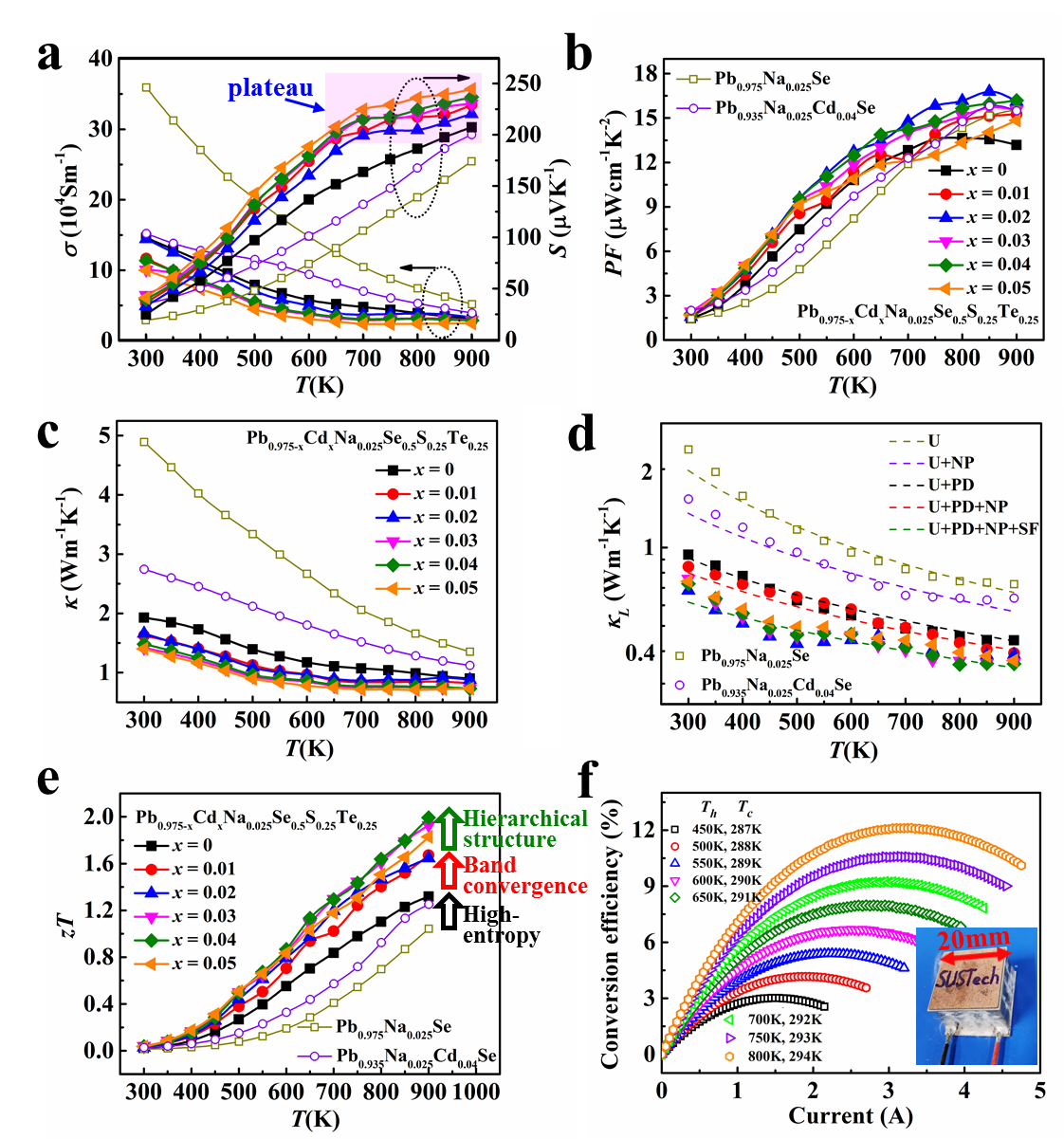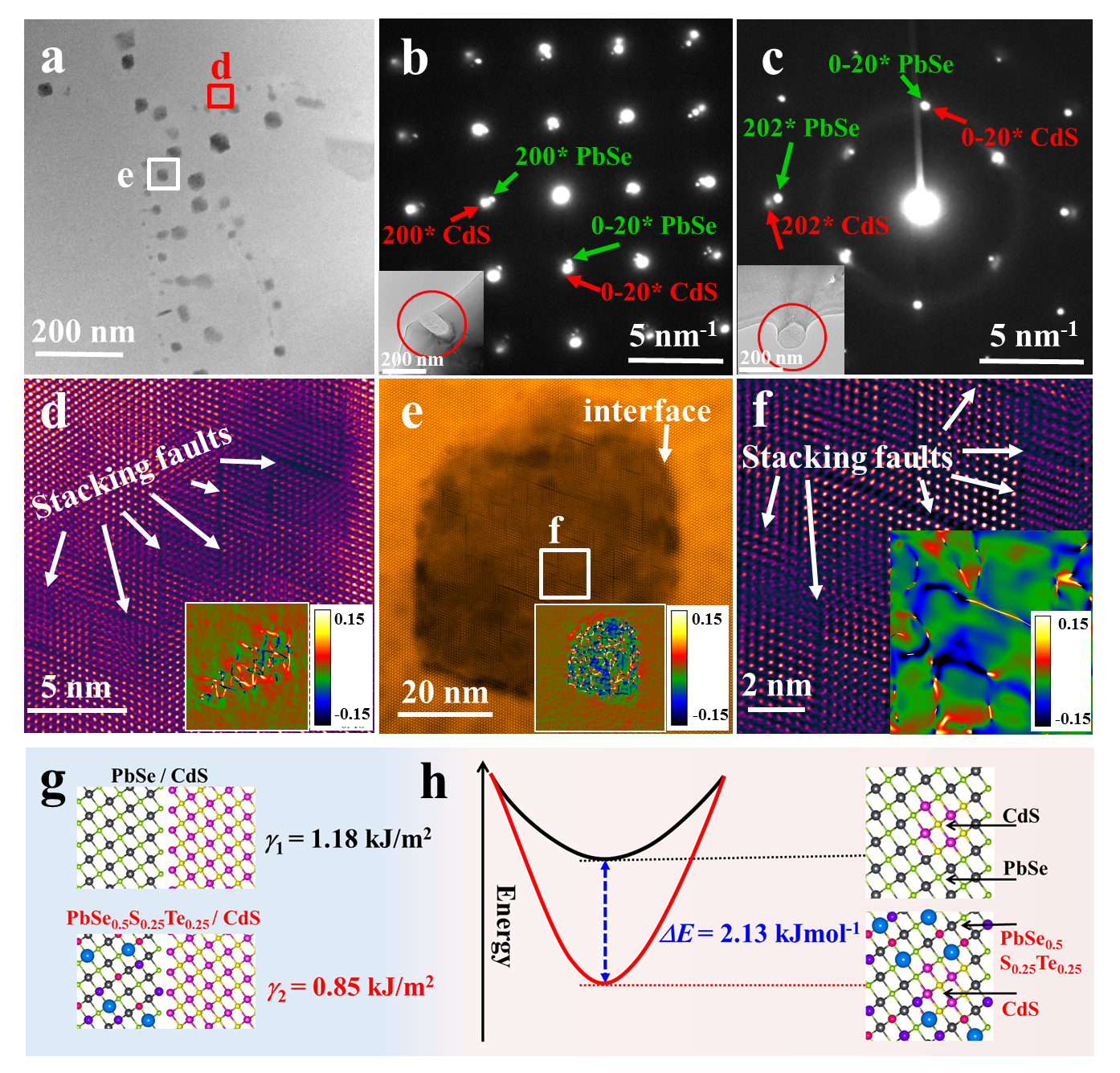Recently, Chair Professor Jiaqing He’s research group from the Department of Physics at the Southern University of Science and Technology (SUSTech) published their recent progress in high-entropy-stabilized thermoelectrics. Their paper, entitled “Entropy engineering promotes thermoelectric performance in p-type chalcogenides,” was published in the high-impact academic journal Nature Communications.

Thermoelectric (TE) technologies can generate electricity from waste heat and have drawn widespread attention because of the possibility of increasing overall energy efficiency. It has significant and irreplaceable advantages over other technologies regarding waste heat recovery, with a massive range of applications. However, its high cost and low conversion efficiency weaken its competitiveness.
In their previous paper (Science, 2021, 371, 830-834), Jiaqing He’s group proposed a new strategy of high-entropy-stabilized composition to increase the alloy limit and develop single-phase high-entropy materials. They found that increasing element species can form the entropy-stabilized single-phase structure. The change of energy by entropy engineering manifests as the extended solubility limits of alloying elements or the entropy-driven structural stabilization effect. The entropy-driven structural stabilization should maintain the high electrical transport properties, and the strong lattice distortion from high-entropy will essentially decrease the lattice thermal conductivity.
Based on this previous work, this group further studied the synergistic effect of the high-entropy-stabilized concept, band engineering, and hierarchical structure. The effect of entropy engineering on the heterointerfaces in nanocomposites was also studied in this paper.

For p-type PbSe-based materials, increasing the contents of Sulfur (S) and Tellurium (Te) at the Selenium (Se) site will result in spinodal decomposition of multiple phases. Further introducing Sodium (Na) at the Lead (Pb) site, the increase in entropy is faster than that of enthalpy, resulting in entropy-driven structural stabilization. Based on the measured thermoelectric properties, they found that the lattice thermal conductivity can be largely decreased by maintaining the electrical transport properties in high-entropy-stabilized composition.
Using the high-entropy-stabilized composition as a matrix, they further increased the band gap by doping Cadmium (Cd) at the Pb site. The increased band gap decreases the light and heavy energy offsets, resulting in the typical band convergence and increased Seebeck coefficient. As a consequence, the combination of high-entropy-stabilized composition and band convergence vastly increased the thermoelectric properties.

Figure 1. Improving the thermoelectric performance of p-type chalcogenides based on entropy engineering
By increasing the content of the alloyed Cd, the introduced nanoprecipitates will form the nanocomposites. From the observation of TEM, they found that the interface between the high-entropy-stabilized matrix and nanoprecipitates would be different from the reported results. Due to the decreased interface energy, the formation energy of the cubic CdS would also decrease, resulting in the stabilized cubic structure at room temperature. The different lattice parameters of the cubic CdS from the high-entropy-stabilized matrix then induced high-density stacking faults within the nanoprecipitates. The moderate scale of the stacking faults forms the hierarchical structure, resulting in the strong scattering for heat-carrying phonons and the ultralow lattice thermal conductivity. As a result, the synergistic effect of high-entropy-stabilized composition, band convergence, and hierarchical structure simultaneously improve the electrical and thermal transport properties, promoting the thermoelectric figure of merit (zT) value to 2.0. Using the p-type high-entropy-stabilized chalcogenides in this work and the n-type high-entropy-stabilized chalcogenides in their previous work, they fabricated the segmented thermoelectric module, which shows a high conversion efficiency of 12%.

Figure 2. Forming hierarchical structure by entropy engineering
Binbin Jiang, a postdoctoral fellow from the Department of Physics at SUSTech, is the first author of this paper. Yong Yu, a doctoral candidate from the Department of Physics, is the co-first author. Professor Jiaqing He from the Department of Physics is the corresponding author.
This research was supported by the National Natural Science Foundation of China (NSFC), the leading talents of the Guangdong Province Program, the Guangdong-Hong Kong-Macao Joint Laboratory, and the Science, Technology and Innovation Commission of Shenzhen Municipality.
Paper links:
Proofread ByAdrian Cremin, Yingying XIA
Photo By